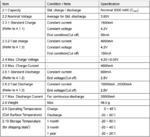I currently have a true 1000w baffang rear hub motor, with 35A controller in rear, and another 1000w front hub motor with separate controller (unknown amps) and throttle. I can nail the rear throttle with no issues. Same with the front throttle, INDIVIDUALLY. These systems run independently from each other, but connected with a simple "Y" connector to the stock Rad 48v battery. The front motor has a much higher speed (30 MPH), but lower acceleration rate, and the rear motor has quicker acceleration, but lower top end (24 MPH+/-). My main intended use is to transverse soft beach sand, and it does so spectacularly. Front wheel does spin a lot in sand if floored, but if feathered along with plenty of rear throttle, it is a great soft sand machine, and the simple revolving front wheel prevents it from "plowing" through the sand.
Obviously I wanted to see what happens on road. Throttles used Individually, and it works great. However, if I "floor" both throttles from a standing start, I imaging I am drawing well over 2000w, and the entire bike dies. No power anywhere. It is not a blown fuse, and it seems to "reset" after about 10 minutes, as if a thermal breaker or a solid state breaker resets. Both battery in and out fuses remain intact. I have not tested for voltage at the battery when this happens, but it MUST be in the battery, because neither controller knows the other exists, and both die completely, and revive simultaneously. At first I thought it may be a low voltage cutoff, but I doubt the front controller even has that function (and it has no programmable functions as far as I know).
What do you suppose is causing things to completely turn off, but eventually return to normal? From there I may be able to modify my dual throttle application to where it continues to stay "battery on and active". Thx!
Obviously I wanted to see what happens on road. Throttles used Individually, and it works great. However, if I "floor" both throttles from a standing start, I imaging I am drawing well over 2000w, and the entire bike dies. No power anywhere. It is not a blown fuse, and it seems to "reset" after about 10 minutes, as if a thermal breaker or a solid state breaker resets. Both battery in and out fuses remain intact. I have not tested for voltage at the battery when this happens, but it MUST be in the battery, because neither controller knows the other exists, and both die completely, and revive simultaneously. At first I thought it may be a low voltage cutoff, but I doubt the front controller even has that function (and it has no programmable functions as far as I know).
What do you suppose is causing things to completely turn off, but eventually return to normal? From there I may be able to modify my dual throttle application to where it continues to stay "battery on and active". Thx!


